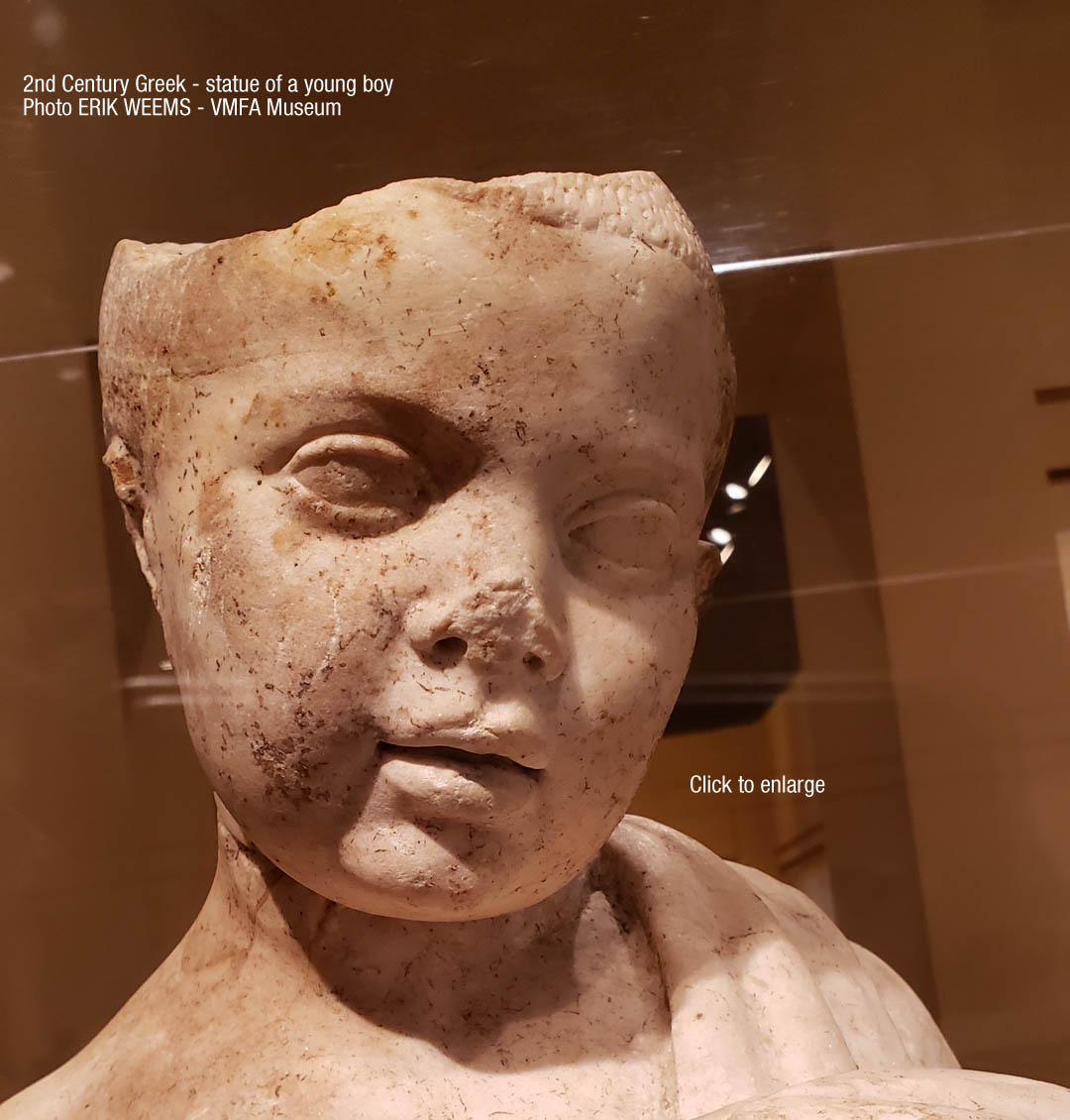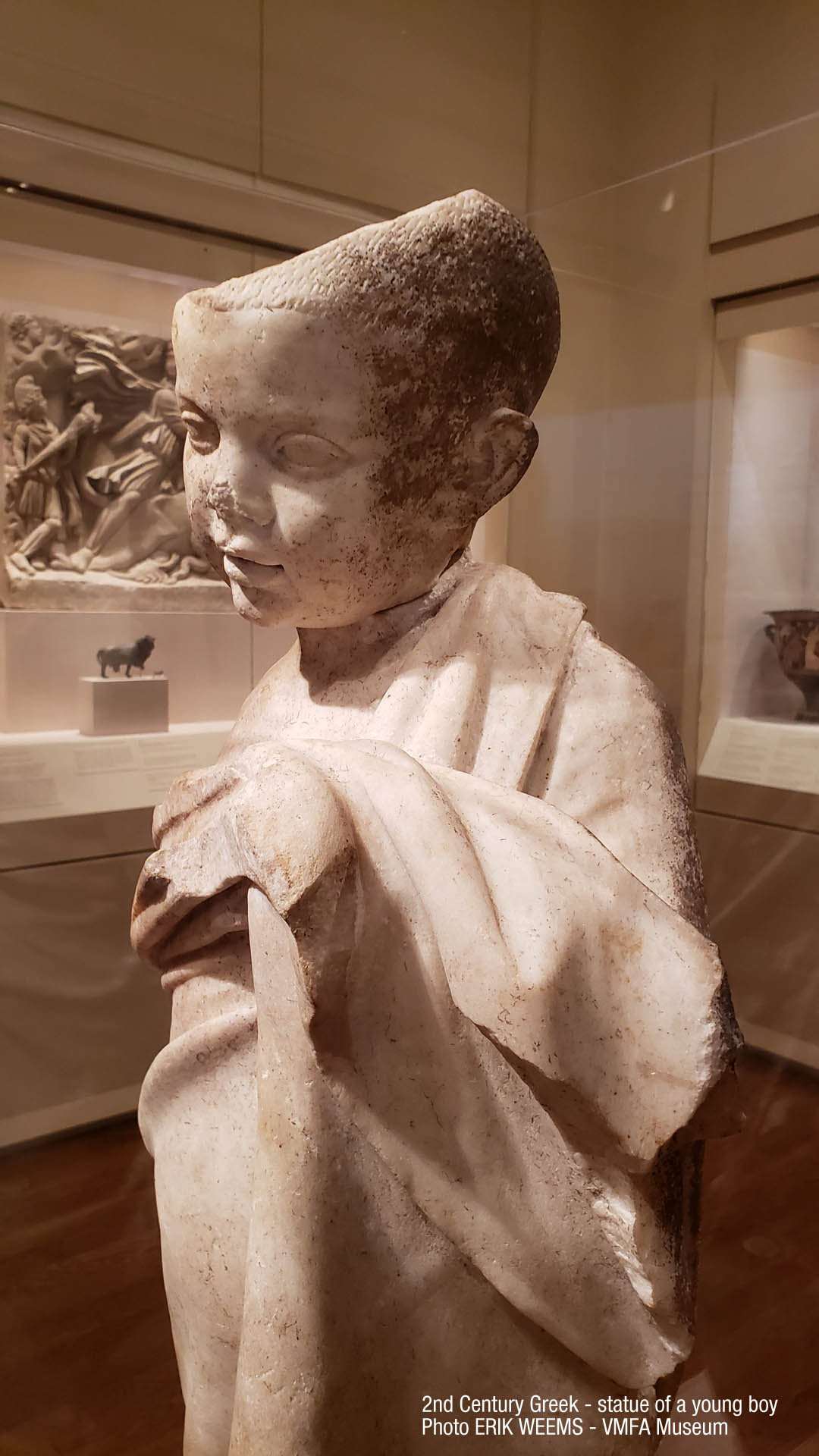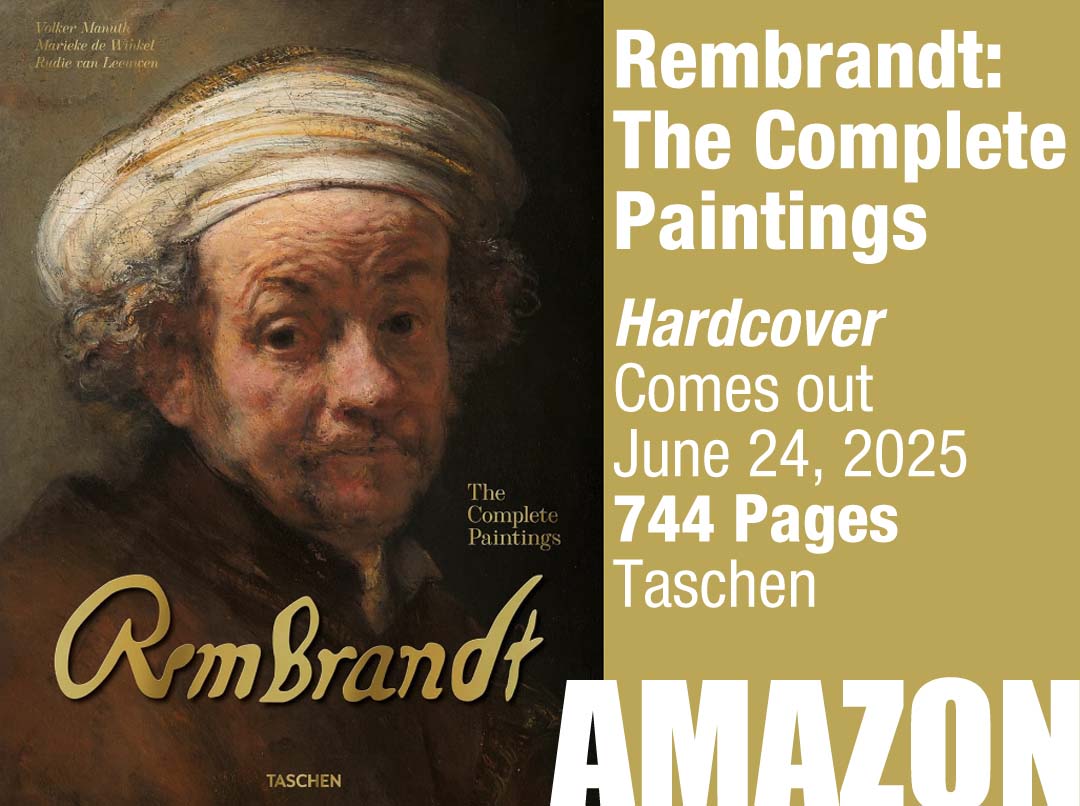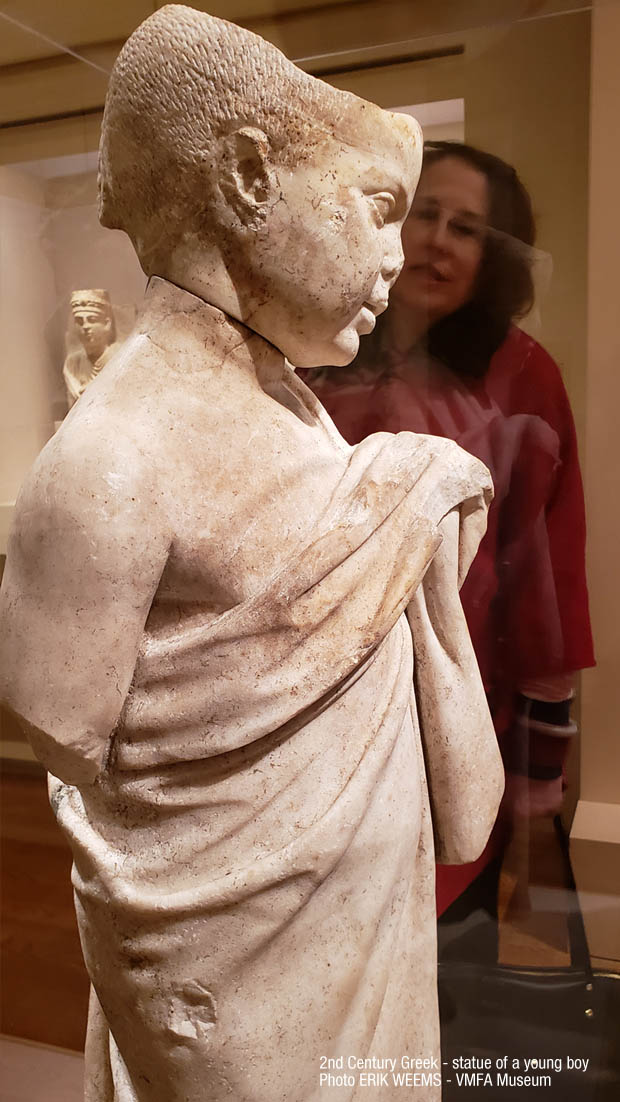Art and Artifice
Statue of a Young Boy
2nd Century Greek - VMFA Museum, Richmond Virginia
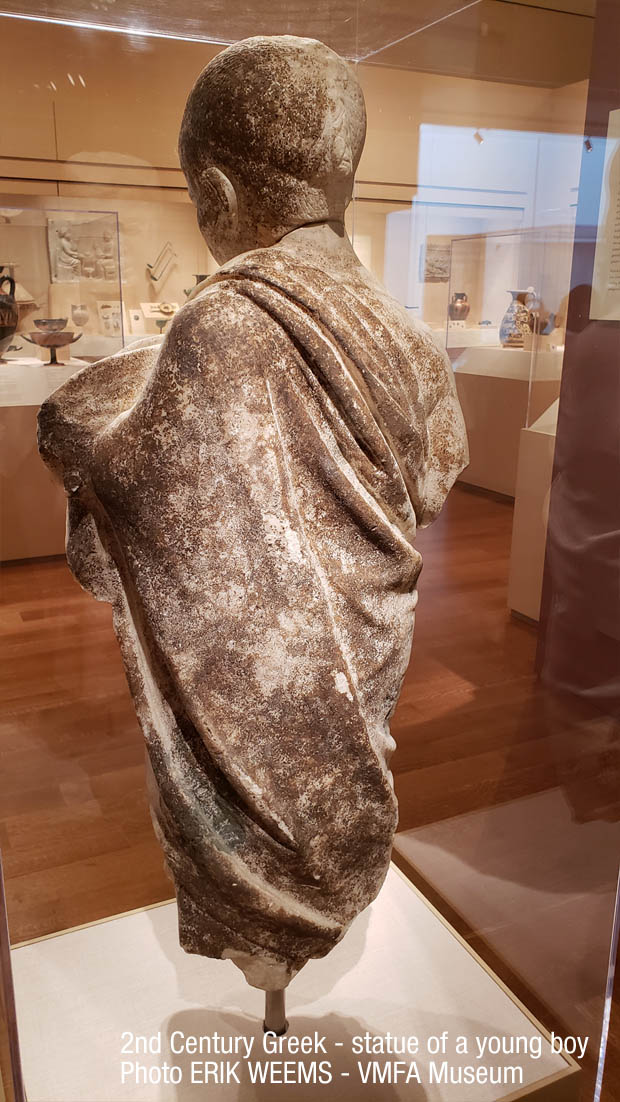
About 2nd Century Greek Sculpture
The 2nd century BC was a time of great artistic advancement in Greece. Known as the Hellenistic period, it is a period of time charted between the death of Alexander the Great in 323 BC to the emergence of the Roman Empire in the 1st century AD.
Hellenistic sculptors sought to create more dynamic and naturalistic representations of the human figure, sometimes using exaggerated emotional expression and physical movement that could feature contortion and highly defined muscularity. Twisted drapery was also a particular feature of this sculpting period.
Famous examples of this period of Greek art is Laocoön and His Sons, which was created in the early 2nd century BC, another is the Aphrodite of Melos, also known as the Venus de Milo.
The focus on naturalism, emotion, and movement particularly characterizes the imagery of this period.
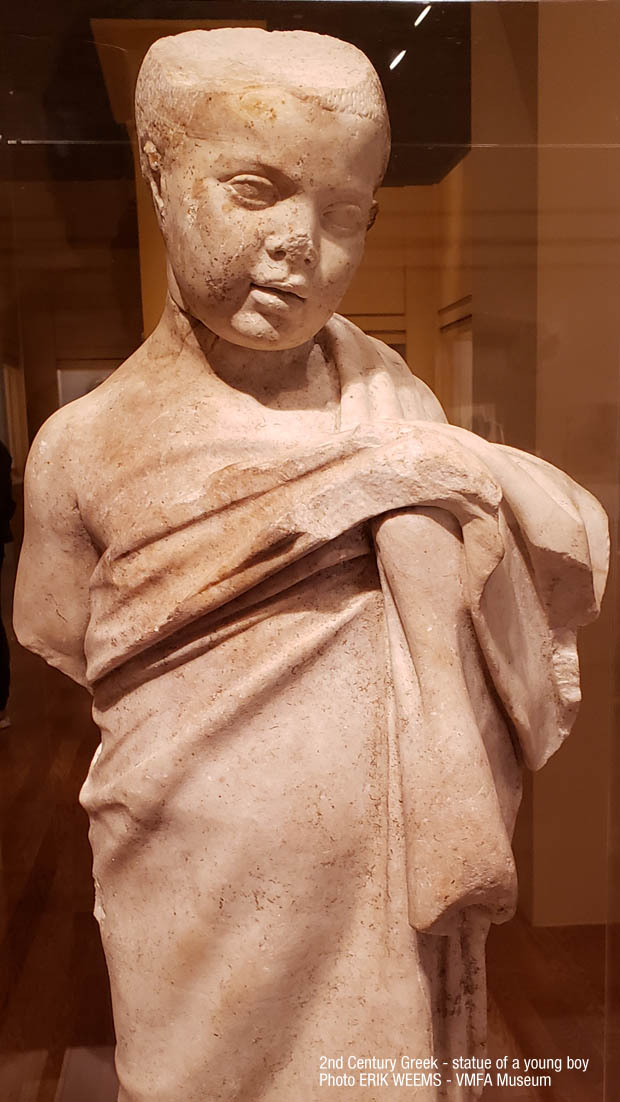

Original Page April 28, 2023
